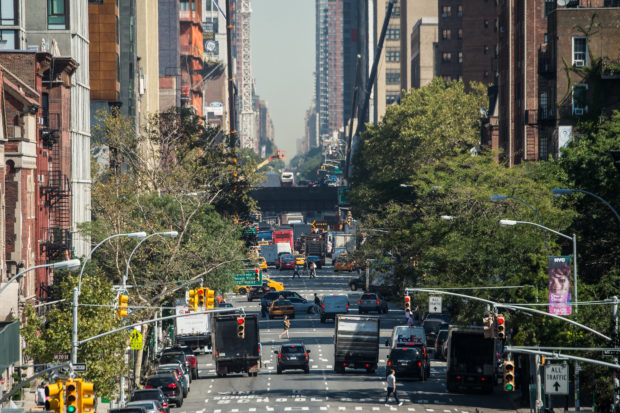We have much more to do and your continued support is needed now more than ever.
Urban Canopies Keep Cities Cool When Temperatures Climb

Cooler streets are good for blue jays too
When it comes to addressing unbearable summer heat in urban areas, few investments offer as many benefits as street trees! Urban trees cool cities in two main ways: by providing shade and through evapotranspiration. Leafy canopies can intercept sunlight from penetrating windows or being absorbed by dark surfaces. And as plants grow, the water released from their leaves and from the soil beneath them provides additional cooling as it enters the atmosphere.
With both bird and insect populations in severe decline in recent decades, ensuring that urban areas continue to create habitat and provide forage for wildlife has never been more important.
Like us, wildlife also needs respite from sweltering temperatures, which healthy urban trees can offer. Research suggests that planting well-selected species of trees that provide many resources to animals–especially tree species native to the area–may provide the biggest boost for biodiversity.
In his book The Nature of Oaks, entomologist Douglas Tallamay explains that in the US, our native oak trees support an estimated nearly 900 species of caterpillar, which bird species such as the Golden-crowned Kinglet, Blue Jay, White-eyed Vireo, and Black-capped Chickadee depend on to rear their young.
Why does extreme heat hit cities so hard?
Compared to nearby rural areas where natural features reflect and dissipate heat far more effectively, urban areas contain many dark paved surfaces, concrete, and other building materials that absorb and hold onto heat. As a result, cities get hotter during the day and cool more slowly at night. This phenomenon is known as the “urban heat island” effect. The tendency for cities to stay warm even after nightfall is especially dangerous, as nighttime heat can disrupt sleep and even increase risk of heat-related death.

Unfortunately, a changing climate will put even more people at risk for discomfort and heat-related illness or death, as heat waves become more extreme and more frequent. Evidence suggests that communities of color and low-income communities experience disproportionate exposure to high temperatures.
How new legislation will help
The recently passed Inflation Reduction Act allocates $1.5 billion in funding for tree planting and related activities through the Urban and Community Forestry Assistance program. It also provides nearly $1.9 billion for grants administered by the Federal Highway Administration to make neighborhoods that have been cleaved apart by surface transportation more walkable, accessible, and equitable–including through natural infrastructure to reduce the urban heat island effect, dampen noise, and assist in stormwater management.
With robust planning and collaboration with the communities most vulnerable to extreme heat, investments in natural infrastructure like native tree planting will make our cities more livable, equitable, and nature-friendly.





















